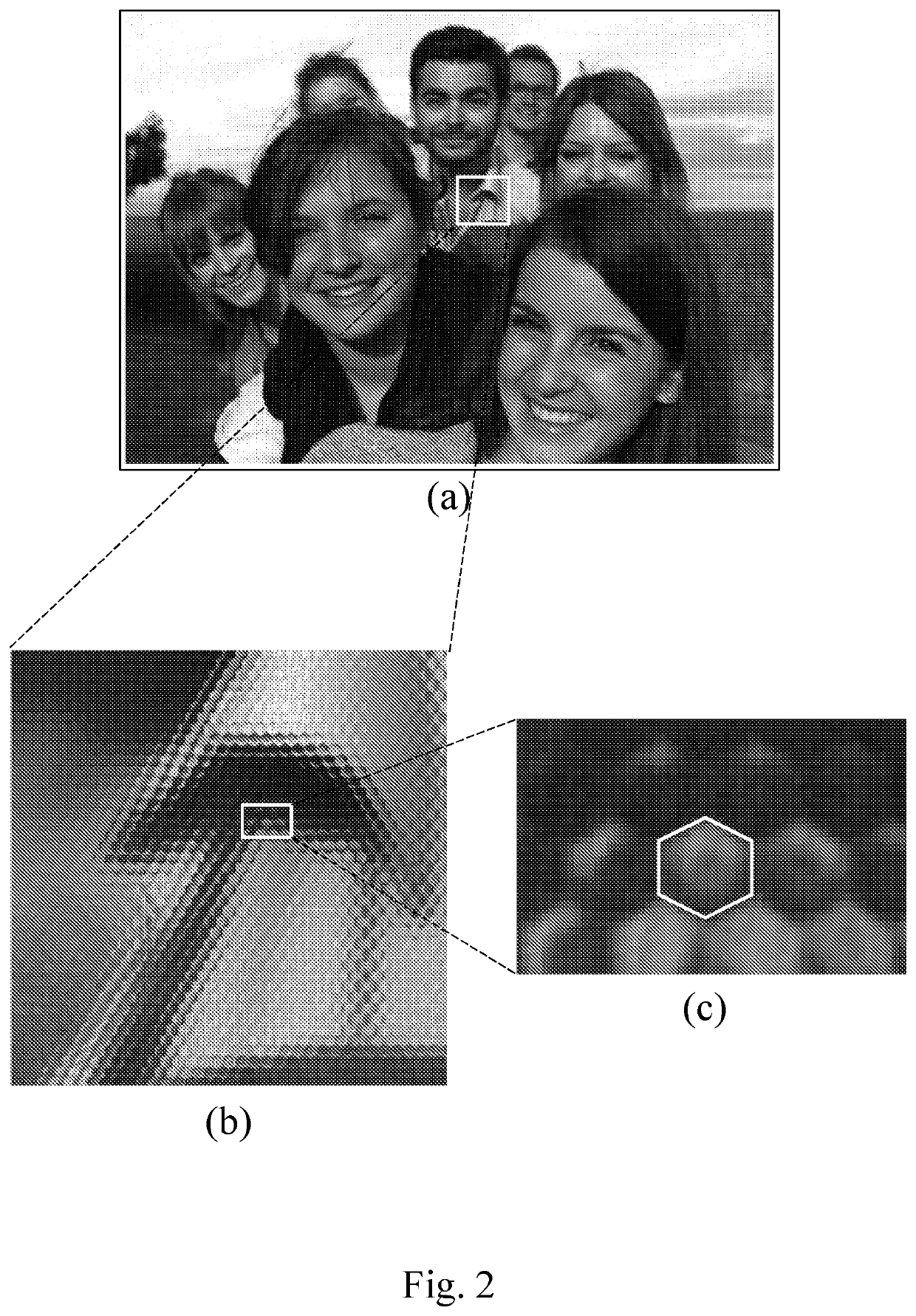Methods and apparatuses for encoding and decoding digital light field images
a technology of light field images and methods, applied in electrical apparatus, digital video signal modification, pictoral communication, etc., can solve the problems of inability to know the directional distribution of light, inability to compress light field images, and inability to achieve efficient compression, so as to avoid redundancy
- Summary
- Abstract
- Description
- Claims
- Application Information
AI Technical Summary
Benefits of technology
Problems solved by technology
Method used
Image
Examples
Embodiment Construction
[0079]In this description, any reference to “an embodiment” will indicate that a particular configuration, structure or feature described in regard to the implementation of the invention is comprised in at least one embodiment. Therefore, the phrase “in an embodiment” and other similar phrases, which may be present in different parts of this description, will not necessarily be all related to the same embodiment. Furthermore, any particular configuration, structure or feature may be combined in one or more embodiments in any way deemed appropriate.
[0080]The references below are therefore used only for sake of simplicity, and do not limit the protection scope or extension of the various embodiments.
[0081]With reference to FIG. 10, an apparatus 1005 for compressing digital images or video streams (also named encoding apparatus 1005) comprises the following parts:[0082]a processing unit 1010, like a Central Processing Unit (CPU), configured for executing a set of instructions for carry...
PUM
 Login to View More
Login to View More Abstract
Description
Claims
Application Information
 Login to View More
Login to View More - R&D
- Intellectual Property
- Life Sciences
- Materials
- Tech Scout
- Unparalleled Data Quality
- Higher Quality Content
- 60% Fewer Hallucinations
Browse by: Latest US Patents, China's latest patents, Technical Efficacy Thesaurus, Application Domain, Technology Topic, Popular Technical Reports.
© 2025 PatSnap. All rights reserved.Legal|Privacy policy|Modern Slavery Act Transparency Statement|Sitemap|About US| Contact US: help@patsnap.com



